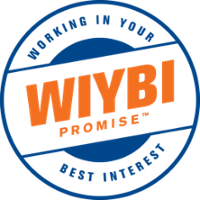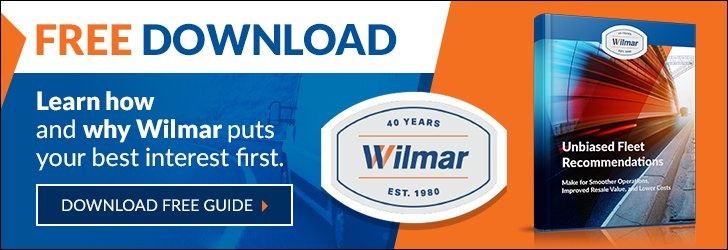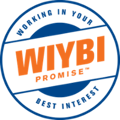
In the dynamic sector of trades, encompassing home services, construction, and pest control, proficient fleet management is vital for upholding competitive advantage and operational efficacy. The integration of Internet of Things (IoT) sensors into fleet vehicles enables real-time data collection and analysis, thereby facilitating informed decision-making and optimized resource allocation.
As of 2025, the IoT fleet management market has demonstrated considerable expansion, with a valuation of approximately USD 20.4 billion in 2024 and an anticipated compound annual growth rate of 17.47% from 2025 to 2033.
This article explores the deployment of IoT sensors for real-time fleet optimization, with emphasis on advantages, fundamental components, practical applications, and strategic considerations for small to medium-sized businesses (SMBs) in the trades industry.
Understanding IoT Sensors in Fleet Management
IoT sensors comprise devices embedded within vehicles that accumulate and transmit data across networks, fostering connectivity and automation. In the context of fleet management, these devices include GPS trackers, telematics units, fuel monitors, and diagnostic sensors. The principal function involves the acquisition of real-time data concerning vehicle positioning, operational performance, and environmental factors, which is then processed to generate actionable insights.
Essential constituents of an IoT-augmented fleet system encompass sensors for data gathering, connectivity modules for transmission, cloud-based platforms for storage and analysis, and user interfaces for data visualization.
Within the trades, this technological advancement shifts operational paradigms from reactive to proactive, empowering managers to address issues expeditiously and elevate overall efficiency.
Benefits for SMBs in Trades
The incorporation of IoT sensors yields significant benefits attuned to the exigencies of SMBs in home services, construction, and pest control.
- Real-Time Tracking and Route Optimization: IoT enables precise surveillance of vehicle locations, reducing idle durations and refining routes around traffic or construction impediments. This capability can engender fuel savings and expedited service responses.
- Predictive Maintenance: Sensors discern anomalies in vehicle conditions, such as engine performance or tire pressure, enabling scheduled maintenance that mitigates disruptions and extends asset longevity.
- Enhanced Safety and Compliance: Through sensor-based monitoring of driver behavior, safer practices are promoted, while automated record-keeping ensures compliance with regulations about service hours.
- Cost Reduction and Efficiency Gains: By aggregating data on fuel consumption and operational patterns, IoT helps identify inefficiencies, potentially reducing expenses in fleet operations.
For pest control fleets, IoT can integrate with specialized tools, such as monitoring chemical storage conditions during transit to ensure regulatory adherence and safety. Similarly, construction firms derive value from geofencing to secure equipment at project sites.
Practical Implementation Strategies
The deployment of IoT sensors requires a systematic methodology to ensure seamless integration.
- Assess Fleet Needs: Examine current operations to pinpoint principal challenges, including route inefficiencies or maintenance delays.
- Select Appropriate Sensors and Platforms: Choose scalable solutions compatible with existing vehicles, with priority given to intuitive interfaces suitable for SMBs.[6]
- Ensure Data Security: Mitigate cybersecurity risks via encryption and access controls, which are particularly critical for interconnected devices.
- Train Personnel: Provide training for drivers and managers to optimize technology utilization and encourage its adoption.
- Monitor and Refine: Continually utilize analytics to refine systems based on performance data.
Integration with artificial intelligence can further enhance functionalities, such as predictive analytics for route planning.
Case Studies and Trends in 2025
In 2025, prevailing trends highlight sustainability and the convergence of AI with IoT. For instance, field service fleets are employing IoT to facilitate transitions to electrification and sophisticated telematics.
A construction enterprise might utilize IoT for real-time monitoring of equipment usage, thereby reducing theft and optimizing resource deployment. In-home services use real-time data to ensure technicians arrive adequately prepared, thereby augmenting client satisfaction.
The Role of Fleet Leasing Partners
Fleet leasing providers, such as Wilmar Inc., can facilitate IoT integration by offering vehicles pre-equipped with sensors and telematics, thus minimizing initial expenditures for SMBs. This partnership includes sustained support for data management and system upgrades, enabling businesses to concentrate on their core trade activities.
Conclusion
The integration of IoT sensors for real-time fleet optimization constitutes a transformative approach for SMBs in the trades, advancing efficiency, security, and cost reductions. By adopting these technologies in 2025, enterprises can achieve operational resilience and a competitive edge. Proactive implementation, supported by reliable partners, will ensure enduring benefits within an evolving industry framework.









